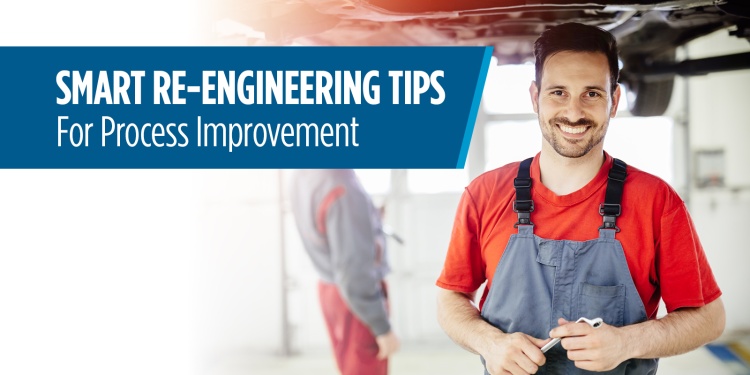
If there is anything the last few months have taught us it’s that innovation, flexibility, and process are the hallmarks of survival. As we discussed previously, process is the foundational bedrock for organizations in times of crises. And process management helps us triage and adapt how work gets done in an organization.
Not only has the pandemic created changes in our working environment and new delivery channels or products which require reworking our processes, it’s also shed light on our broken and outdated processes.
So, what does all this mean?
Incremental improvements are important. However, recent times require we move beyond tweaks to rethinking the purpose and fit of our processes. Or in other word process re-engineering.
And given the wide variety of processes and end goals, there’s no one-size-fits-all approach for process re-engineering.
Toolbox for Re-Engineering Your Processes
Our research has uncovered 8 common tools that organizations use in their re-engineering efforts.
1. Customer Journey Mapping—depicts the key interactions between a customer and organization. Journey maps incorporate data about customer behavior, feelings, and motivations for each interaction or touchpoint.
It’s best fit for any people-related challenges or processes.
2. Design Thinking—is a human-centric, solutions-based approach to problem solving that enables organizations to ask better questions and generate more compelling solutions.
It’s best fit when you need to get to the root of complex or ill-defined problems.
3. Benchmarking—is an approach an organization uses to measure its internal processes and look externally to identify, understand, and adapt practices used by best-in-class organizations.
It’s best fit for when you need to use performance data to help understand the need for and prioritization of re-engineering efforts or to identify ideas or processes that your organization can use in its re-engineering efforts.
4. Automation—is the use of software “bots” to mimic human action and connect multiple, fragmented systems together through automation.
It’s best fit for high-volume, transactional processes that have clear business rules and few exceptions.
5. Workshops—are group discussions wherein participants share experiences, discuss ideas, and ideally arrive at a shared understanding of a concept and plan of action.
It’s best fit for work that is narrow in scope, such as re-engineering a specific process category or when the organization needs a high level of employee buy-in or standardized efforts across multiple groups.
6. Process Mining—is an analysis method which automatically generates process visualizations based on real-life data.
It’s best fit for processes that touch major enterprise systems because it requires event logs, with a minimum, a case ID number, time stamp, and activity.
7. Simulations—are model-based representations used to simulate and test process change.
It’s best fit for exploring changes in dangerous, costly, or otherwise high-impact processes.
8. Process Frameworks—are a means of grouping processes into appropriately related categories.
They are best fit where processes are ill defined, too many variations, or organizations need an objective perspective on what elements their processes should contain.
Which tools are part of your re-engineering toolkit?
For more information on this topic join Jonathan Kraft and myself for a webinar on Thursday, September 24, as they discuss process re-engineering and the best-fit tool for your re-engineering needs. Join the webinar to learn:
- what is process re-engineering,
- why it’s important,
- the pros and cons of re-engineering tools, and
- how to determine which tool is fit for your need.
For more process and performance management research and insights, follow me on twitter at @hlykehogland or connect with me on LinkedIn.